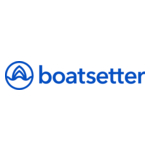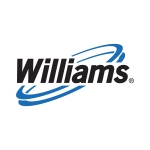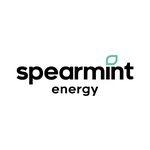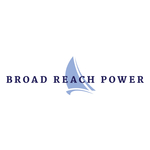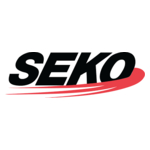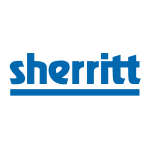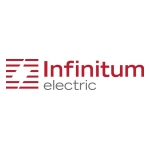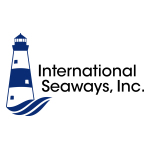HOUSTON--(BUSINESS WIRE)--Oceaneering International, Inc. ("Oceaneering") (NYSE:OII) today reported net income of $3.7 million, or $0.04 per share, on revenue of $524 million for the three months ended June 30, 2022. Adjusted net income was $7.4 million, or $0.07 per share, reflecting the impact of $0.9 million of pre-tax adjustments associated with foreign exchange gains recognized during the quarter and $4.5 million of discrete tax adjustments, primarily due to changes in valuation allowances.
During the prior quarter ended March 31, 2022, Oceaneering reported net loss of $19.2 million, or $(0.19) per share, on revenue of $446 million. Adjusted net loss was $6.4 million, or $(0.06) per share, reflecting the impact of $0.4 million of pre-tax adjustments associated with foreign exchange gains recognized during the quarter and $13.1 million of discrete tax adjustments, primarily due to changes in valuation allowances.
Adjusted operating income (loss), operating margins, net income (loss) and earnings (loss) per share, EBITDA and adjusted EBITDA (as well as EBITDA and adjusted EBITDA margins), and free cash flow are non-GAAP measures that exclude the impacts of certain identified items. Reconciliations to the corresponding GAAP measures are shown in the tables Adjusted Net Income (Loss) and Diluted Earnings (Loss) per Share (EPS), EBITDA and Adjusted EBITDA and Margins, Free Cash Flow, 2022 Adjusted EBITDA and Free Cash Flow Estimates, Adjusted Operating Income (Loss) and Margins by Segment, and EBITDA and Adjusted EBITDA and Margins by Segment. These tables are included below under the caption Reconciliations of Non-GAAP to GAAP Financial Information.
Summary of Results
|
|
(in thousands, except per share amounts)
|
|
|
|
|
|
|
|
|
|
|
|
|
|
|
|
For the Three Months Ended
|
|
For the Six Months Ended
|
|
|
|
Jun 30,
|
|
Mar 31,
|
|
Jun 30,
|
|
|
|
|
|
|
|
|
|
|
|
2022
|
|
2021
|
|
2022
|
|
2022
|
|
2021
|
|
|
|
|
|
|
|
|
|
|
|
|
|
Revenue
|
|
$ 524,031
|
|
$ 498,199
|
|
$ 446,159
|
|
$ 970,190
|
|
$ 935,752
|
|
Gross Margin
|
|
76,041
|
|
68,397
|
|
45,480
|
|
121,521
|
|
125,054
|
|
Income (Loss) from Operations
|
|
22,850
|
|
22,819
|
|
(1,039)
|
|
21,811
|
|
36,602
|
|
Net Income (Loss)
|
|
3,720
|
|
6,241
|
|
(19,210)
|
|
(15,490)
|
|
(3,124)
|
|
|
|
|
|
|
|
|
|
|
|
|
|
Diluted Earnings (Loss) Per Share
|
|
$ 0.04
|
|
$ 0.06
|
|
$ (0.19)
|
|
$ (0.15)
|
|
$ (0.03)
|
|
|
|
|
|
|
|
For the second quarter of 2022:
-
Offshore activity is recovering with our Subsea Robotics and Offshore Projects Group operating segments recording their highest levels of operating income since the beginning of 2018 (the earliest period restated to reflect our 2020 segment realignment);
-
Consolidated Adjusted EBITDA was $53.5 million;
-
Consolidated Operating Income was $22.9 million; and
-
Cash position decreased by $69.6 million, from $438 million to $368 million.
As of June 30, 2022:
-
Remotely Operated Vehicles (ROV) fleet count was 250, Q2 utilization was 64%, and Q2 average revenue per day on hire was $8,278; and
-
Manufactured Products backlog was $335 million.
Revised guidance for 2022:
-
Consolidated Adjusted EBITDA is forecast in the range of $210 million to $240 million; and
-
Free cash flow generation is forecast in the range of $25 million to $75 million.
Roderick A. Larson, President and Chief Executive Officer of Oceaneering, stated, "I am pleased to confirm that the resurgence of offshore activity we anticipated to start in the second quarter of 2022 is materializing and beginning to be reflected in our results. Specifically, our Subsea Robotics (SSR) and Offshore Project Group (OPG) segments generated some of the highest levels of revenue and the highest operating incomes seen since the beginning of 2018, the earliest period restated to reflect our 2020 segment realignment. Our first half 2022 financial performance unfolded slightly below our expectations due to challenges in hiring offshore personnel, primarily in the Gulf of Mexico (GoM), resulting in some delayed projects and missed opportunities. In addition, the Continuing Resolution earlier in the year continues to negatively impact revenue mix and timing in our Aerospace and Defense Technologies (ADTech) segment. We see strong market dynamics supporting robust activity in our offshore markets during the second half of 2022 to be partially muted by timing uncertainties within our ADTech segment. Given our first half results and latest expectations for the second half of 2022, we are updating our adjusted EBITDA guidance range to $210 million to $240 million for the full year.
“Our second quarter 2022 results increased significantly compared to the first quarter of 2022, as we produced adjusted EBITDA of $53.5 million, which was within the guidance range provided at the beginning of the quarter. The resurgence in seasonal offshore demand led to significantly increased results from our SSR and OPG segments, which was only partially offset by the lower results from our Manufactured Products and ADTech segments. During the quarter, our cash balance declined by $69.6 million, largely due to an increase in receivables. We are concerned to see our customers extending payment terms and are actively working with them to improve this situation. We continue to expect positive free cash flow generation for 2022 but are revising our guidance range to $25 million to $75 million for the full year.
Segment Results
“Sequentially, SSR revenue and operating income both increased significantly as expected, with healthy levels of seasonal activity for ROV, survey, and tooling services. SSR EBITDA margin of 28% improved as compared to the first quarter of 2022, with the increased activity aligning with the additional costs incurred during the first quarter. We also started to realize recent pricing improvements.
"Second quarter 2022 ROV days on hire were sequentially higher for both drill support and vessel-based services. Fleet utilization rose significantly, averaging 64% for the quarter as compared to 53% during the first quarter. Our fleet use was 57% for the quarter in drill support and 43% in vessel-based activity as compared to 63% and 37%, respectively, during the first quarter. Average ROV revenue per day on hire of $8,278 for the quarter was 1% higher than the first quarter of 2022.
"Manufactured Products had a second quarter 2022 operating loss of $1.4 million on higher revenue compared to the first quarter of 2022. Revenue increased primarily due to the receipt of certain umbilical materials that did not contribute to current quarter manufacturing activity. Operating results sequentially declined due primarily to less profitable work being executed in our mobility solutions businesses. Our Manufactured Products backlog on June 30, 2022 remained flat at $335 million, compared to our March 31, 2022 backlog of $334 million. Our book-to-bill ratio was 1.1 for the six months ended June 30, 2022 and 1.25 for the trailing 12 months.
"Second quarter 2022 OPG revenue and operating income increased significantly compared to the first quarter of 2022, primarily as a result of increased inspection, maintenance and repair (IMR) and installation work in the GoM. The sequential operating income margin increase, from 1% in the first quarter of 2022 to 15% in the second quarter of 2022, reflected increased demand and significantly improved pricing for vessel-based services in the GoM.
"Integrity Management and Digital Solutions (IMDS) sequential operating income was essentially flat on a 5% increase in revenue. Higher seasonal activity contributed to the revenue increase. Operating income margin of 6% was the same as recorded for the first quarter of 2022.
"ADTech second quarter 2022 operating income declined from the first quarter of 2022 on a 5% increase in revenue. Operating income margin of 10% declined more than expected from the 15% margin achieved in the first quarter of 2022, due to changes in revenue mix and delays in certain projects where we incurred pre-contract costs. At the corporate level for the second quarter of 2022, Unallocated Expenses of $31.7 million were relatively flat as compared to the first quarter of 2022.
Third Quarter Outlook
"For the third quarter, compared to the second quarter, we anticipate increased revenue and operating results in our SSR and OPG segments on continuing high levels of offshore activity. Operating income margin for Manufactured Products is projected to recover to the low-single digit range on a modest decrease in revenue. IMDS revenue is forecast to increase modestly with a slight improvement in operating income margin. We expect relatively flat operating income for ADTech on a slight improvement in revenue. Unallocated Expenses are forecast to be in the low- to mid- $30 million range. On a consolidated basis, we expect a sequential increase in third quarter 2022 results, with Adjusted EBITDA in the range of $60 million to $70 million on increased revenue.
Full Year 2022 Guidance
"For the full year of 2022, at the segment level compared to 2021, we forecast SSR operating results to improve on higher revenue, and EBITDA margin to average in the high 20% range. ROV fleet utilization is expected to be in the mid-60% range for the year. For Manufactured Products, we forecast higher operating results on a significant increase in revenue compared to 2021, with backlog additions from 2021 resulting in significantly higher revenue in the second half of this year. We expect operating margin to be in the low- to mid-single-digit range and our book-to-bill ratio to be in the range of 1.0 to 1.2 for the full year. Quotation activity is robust within our energy businesses and interest is increasing in our mobility solutions businesses. For OPG, we expect higher activity to continue for the remainder of the year, especially for installation and IMR activity in the GoM. We expect continued higher vessel utilization and pricing to sustain operating margins in the mid-teens range for the remainder of the year. For IMDS, we forecast lower operating results on higher revenue, with operating margin to decline slightly as compared to 2021. And for ADTech, we expect lower operating results on relatively flat revenue, with operating income margin improving in the fourth quarter of 2022. Unallocated Expenses are expected to average in the low- to mid-$30 million range per quarter for the remainder of 2022.
Cash and Liquidity
"As previously announced, we entered into a new revolving credit facility in April 2022, which provides access to substantial liquidity through April of 2026. This new facility, when combined with our cash balance, gives us good flexibility both to grow our businesses and to address the maturity of our 2024 notes. We expect a meaningful reversal from cash consumption during the first half of 2022 to significant cash generation during the second half of the year and now expect to generate between $25 million and $75 million of free cash flow for the full year."
This release contains "forward-looking statements," as defined in the Private Securities Litigation Reform Act of 1995, including, without limitation, statements as to the expectations, beliefs, future expected business and financial performance and prospects of Oceaneering. More specifically, the forward-looking statements in this press release include the statements concerning Oceaneering’s: full year 2022 guidance ranges for consolidated EBITDA and expected positive free cash flow generation; characterization of market dynamics and their impact and timing on the activity in our offshore markets during the second half of 2022; backlog, to the extent backlog may be an indicator of future revenue or profitability; characterization of third quarter activity levels and operating profitability for all segments; forecasted third quarter Unallocated Expenses; expected third quarter 2022 consolidated results and EBITDA range; expectations regarding full year 2022 segment results, including anticipated ROV fleet utilization, Manufactured Products book-to-bill range, OPG IMR activity, pricing, and vessel utilization, expected segment activity and timing and its basis, forecasted segment revenue, operating income, and EBITDA and operating income margins, and the associated comparisons and explanations; expected average range of Unallocated Expenses for the remainder of 2022; expectation of a meaningful reversal from cash consumption during the first half of 2022 to significant cash generation during the second half of the year; and characterization of demand, activity levels, market fundamentals, outlook, and financials as seasonal, strong, supportive, robust, significant, substantial, or flexible.
The forward-looking statements included in this release are based on our current expectations and are subject to certain risks, assumptions, trends, and uncertainties that could cause actual results to differ materially from those indicated by the forward-looking statements. Among the factors that could cause actual results to differ materially include: factors affecting the level of activity in the oil and gas industry, including worldwide demand for and prices of oil and natural gas, oil and natural gas production growth and the supply and demand of offshore drilling rigs; actions by members of OPEC and other oil exporting countries; decisions about offshore developments to be made by oil and gas exploration, development and production companies; the use of subsea completions and our ability to capture associated market share; general economic and business conditions and industry trends; the strength of the industry segments in which we are involved; the continuing effects of the COVID-19 pandemic and the governmental, customer, supplier, and other responses thereto; cancellations of contracts, change orders and other contractual modifications, force majeure declarations and the exercise of contractual suspension rights and the resulting adjustments to our backlog; collections from our customers; our future financial performance, including as a result of the availability, terms and deployment of capital; the consequences of significant changes in currency exchange rates; the volatility and uncertainties of credit markets; changes in tax laws, regulations and interpretation by taxing authorities; changes in, or our ability to comply with, other laws and governmental regulations, including those relating to the environment; the continued availability of qualified personnel; our ability to obtain raw materials and parts on a timely basis and, in some cases, from limited sources; operating risks normally incident to offshore exploration, development and production operations; hurricanes and other adverse weather and sea conditions; cost and time associated with drydocking of our vessels; the highly competitive nature of our businesses; adverse outcomes from legal or regulatory proceedings; the risks associated with integrating businesses we acquire; rapid technological changes; and social, political, military and economic situations in foreign countries where we do business and the possibilities of civil disturbances, war, other armed conflicts or terrorist attacks. For a more complete discussion of these and other risk factors, please see Oceaneering’s latest annual report on Form 10-K and subsequent quarterly reports on Form 10-Q filed with the Securities and Exchange Commission. You should not place undue reliance on forward-looking statements. Except to the extent required by applicable law, Oceaneering undertakes no obligation to update or revise any forward-looking statement.
Oceaneering is a global technology company delivering engineered services and products and robotic solutions to the offshore energy, defense, aerospace, manufacturing, and entertainment industries.
For more information on Oceaneering, please visit www.oceaneering.com.
- Tables follow on next page -
|
|
|
|
|
|
OCEANEERING INTERNATIONAL, INC. AND SUBSIDIARIES
|
|
|
|
|
|
|
CONDENSED CONSOLIDATED BALANCE SHEETS
|
|
|
|
|
|
|
|
|
|
|
Jun 30, 2022
|
Dec 31, 2021
|
|
|
|
|
(in thousands)
|
ASSETS
|
|
|
|
|
|
Current assets (including cash and cash equivalents of $368,412 and $538,114)
|
|
|
$
|
1,147,764
|
|
$
|
1,188,003
|
|
Net property and equipment
|
|
|
|
|
455,304
|
|
|
489,596
|
|
Other assets
|
|
|
|
|
269,355
|
|
|
285,260
|
|
Total Assets
|
|
|
$
|
1,872,423
|
|
$
|
1,962,859
|
|
|
|
|
|
|
|
LIABILITIES AND EQUITY
|
|
|
|
|
Current liabilities
|
|
|
|
$
|
472,739
|
|
$
|
501,161
|
|
Long-term debt
|
|
|
|
|
701,539
|
|
|
702,067
|
|
Other long-term liabilities
|
|
|
|
221,417
|
|
|
248,607
|
|
Equity
|
|
|
|
|
476,728
|
|
|
511,024
|
|
Total Liabilities and Equity
|
|
|
$
|
1,872,423
|
|
$
|
1,962,859
|
|
|
|
|
|
|
|
CONDENSED CONSOLIDATED STATEMENTS OF OPERATIONS
|
|
|
|
|
|
|
|
For the Three Months Ended
|
For the Six Months Ended
|
|
Jun 30, 2022
|
Jun 30, 2021
|
Mar 31, 2022
|
Jun 30, 2022
|
Jun 30, 2021
|
|
(in thousands, except per share amounts)
|
|
|
|
|
|
|
Revenue
|
$
|
524,031
|
|
$
|
498,199
|
|
$
|
446,159
|
|
$
|
970,190
|
|
$
|
935,752
|
|
Cost of services and products
|
|
447,990
|
|
|
429,802
|
|
|
400,679
|
|
|
848,669
|
|
|
810,698
|
|
Gross margin
|
|
76,041
|
|
|
68,397
|
|
|
45,480
|
|
|
121,521
|
|
|
125,054
|
|
Selling, general and administrative expense
|
|
53,191
|
|
|
45,578
|
|
|
46,519
|
|
|
99,710
|
|
|
88,452
|
|
Income (loss) from operations
|
|
22,850
|
|
|
22,819
|
|
|
(1,039
|
)
|
|
21,811
|
|
|
36,602
|
|
Interest income
|
|
767
|
|
|
683
|
|
|
796
|
|
|
1,563
|
|
|
1,202
|
|
Interest expense, net of amounts capitalized
|
|
(9,619
|
)
|
|
(9,729
|
)
|
|
(9,443
|
)
|
|
(19,062
|
)
|
|
(20,136
|
)
|
Equity in income (losses) of unconsolidated affiliates
|
|
318
|
|
|
378
|
|
|
294
|
|
|
612
|
|
|
912
|
|
Other income (expense), net
|
|
583
|
|
|
(1,955
|
)
|
|
444
|
|
|
1,027
|
|
|
(3,408
|
)
|
Income (loss) before income taxes
|
|
14,899
|
|
|
12,196
|
|
|
(8,948
|
)
|
|
5,951
|
|
|
15,172
|
|
Provision (benefit) for income taxes
|
|
11,179
|
|
|
5,955
|
|
|
10,262
|
|
|
21,441
|
|
|
18,296
|
|
Net Income (Loss)
|
$
|
3,720
|
|
$
|
6,241
|
|
$
|
(19,210
|
)
|
$
|
(15,490
|
)
|
$
|
(3,124
|
)
|
|
|
|
|
|
|
Weighted average diluted shares outstanding
|
|
101,430
|
|
|
100,847
|
|
|
99,963
|
|
|
100,110
|
|
|
99,613
|
|
Diluted earnings (loss) per share
|
$
|
0.04
|
|
$
|
0.06
|
|
$
|
(0.19
|
)
|
$
|
(0.15
|
)
|
$
|
(0.03
|
)
|
|
|
|
|
|
|
The above Condensed Consolidated Balance Sheets and Condensed Consolidated Statements of Operations should be read in conjunction with the Company's latest Annual Report on Form 10-K and Quarterly Report on Form 10-Q.
|
SEGMENT INFORMATION
|
|
|
|
|
|
|
For the Three Months Ended
|
For the Six Months Ended
|
|
|
Jun 30, 2022
|
Jun 30, 2021
|
Mar 31, 2022
|
Jun 30, 2022
|
Jun 30, 2021
|
|
|
($ in thousands)
|
Subsea Robotics
|
|
|
|
|
|
|
|
Revenue
|
$
|
157,123
|
|
$
|
141,371
|
|
$
|
127,989
|
|
$
|
285,112
|
|
$
|
260,490
|
|
|
Gross margin
|
$
|
37,004
|
|
$
|
31,767
|
|
$
|
21,958
|
|
$
|
58,962
|
|
$
|
55,845
|
|
Operating income (loss)
|
$
|
25,938
|
|
$
|
21,710
|
|
$
|
11,552
|
|
$
|
37,490
|
|
$
|
36,329
|
|
Operating income (loss) %
|
|
17
|
%
|
|
15
|
%
|
|
9
|
%
|
|
13
|
%
|
|
14
|
%
|
|
ROV days available
|
|
22,750
|
|
|
22,750
|
|
|
22,500
|
|
|
45,250
|
|
|
45,219
|
|
|
ROV days utilized
|
|
14,631
|
|
|
14,005
|
|
|
11,842
|
|
|
26,473
|
|
|
25,892
|
|
|
ROV utilization
|
|
64
|
%
|
|
62
|
%
|
|
53
|
%
|
|
59
|
%
|
|
57
|
%
|
|
|
|
|
|
|
|
Manufactured Products
|
|
|
|
|
|
|
|
Revenue
|
$
|
105,456
|
|
$
|
79,127
|
|
$
|
82,692
|
|
$
|
188,148
|
|
$
|
165,952
|
|
|
Gross margin
|
$
|
7,918
|
|
$
|
8,391
|
|
$
|
11,002
|
|
$
|
18,920
|
|
$
|
18,395
|
|
Operating income (loss)
|
$
|
(1,365
|
)
|
$
|
790
|
|
$
|
2,643
|
|
$
|
1,278
|
|
$
|
3,543
|
|
Operating income (loss) %
|
|
(1
|
) %
|
|
1
|
%
|
|
3
|
%
|
|
1
|
%
|
|
2
|
%
|
Backlog at end of period
|
$
|
335,000
|
|
$
|
315,000
|
|
$
|
334,000
|
|
$
|
335,000
|
|
$
|
315,000
|
|
|
|
|
|
|
|
|
Offshore Projects Group
|
|
|
|
|
|
|
|
Revenue
|
$
|
116,457
|
|
$
|
107,951
|
|
$
|
97,397
|
|
$
|
213,854
|
|
$
|
197,185
|
|
|
Gross margin
|
$
|
25,441
|
|
$
|
14,566
|
|
$
|
7,737
|
|
$
|
33,178
|
|
$
|
29,677
|
|
Operating income (loss)
|
$
|
17,535
|
|
$
|
7,996
|
|
$
|
666
|
|
$
|
18,201
|
|
$
|
16,809
|
|
Operating income (loss) %
|
|
15
|
%
|
|
7
|
%
|
|
1
|
%
|
|
9
|
%
|
|
9
|
%
|
|
|
|
|
|
|
|
Integrity Management & Digital Solutions
|
|
|
|
|
|
|
Revenue
|
$
|
59,438
|
|
$
|
64,070
|
|
$
|
56,570
|
|
$
|
116,008
|
|
$
|
118,118
|
|
|
Gross margin
|
$
|
9,222
|
|
$
|
10,462
|
|
$
|
9,199
|
|
$
|
18,421
|
|
$
|
18,671
|
|
Operating income (loss)
|
$
|
3,436
|
|
$
|
4,721
|
|
$
|
3,508
|
|
$
|
6,944
|
|
$
|
7,195
|
|
Operating income (loss) %
|
|
6
|
%
|
|
7
|
%
|
|
6
|
%
|
|
6
|
%
|
|
6
|
%
|
|
|
|
|
|
|
|
Aerospace and Defense Technologies
|
|
|
|
|
|
|
Revenue
|
$
|
85,557
|
|
$
|
105,680
|
|
$
|
81,511
|
|
$
|
167,068
|
|
$
|
194,007
|
|
|
Gross margin
|
$
|
15,744
|
|
$
|
24,603
|
|
$
|
16,870
|
|
$
|
32,614
|
|
$
|
46,713
|
|
Operating income (loss)
|
$
|
8,961
|
|
$
|
19,340
|
|
$
|
11,844
|
|
$
|
20,805
|
|
$
|
36,179
|
|
Operating income (loss) %
|
|
10
|
%
|
|
18
|
%
|
|
15
|
%
|
|
12
|
%
|
|
19
|
%
|
|
|
|
|
|
|
|
Unallocated Expenses
|
|
|
|
|
|
|
|
Gross margin
|
$
|
(19,288
|
)
|
$
|
(21,392
|
)
|
$
|
(21,286
|
)
|
$
|
(40,574
|
)
|
$
|
(44,247
|
)
|
Operating income (loss)
|
$
|
(31,655
|
)
|
$
|
(31,738
|
)
|
$
|
(31,252
|
)
|
$
|
(62,907
|
)
|
$
|
(63,453
|
)
|
|
|
|
|
|
|
|
Total
|
|
|
|
|
|
|
|
Revenue
|
$
|
524,031
|
|
$
|
498,199
|
|
$
|
446,159
|
|
$
|
970,190
|
|
$
|
935,752
|
|
|
Gross margin
|
$
|
76,041
|
|
$
|
68,397
|
|
$
|
45,480
|
|
$
|
121,521
|
|
$
|
125,054
|
|
Operating income (loss)
|
$
|
22,850
|
|
$
|
22,819
|
|
$
|
(1,039
|
)
|
$
|
21,811
|
|
$
|
36,602
|
|
Operating income (loss) %
|
|
4
|
%
|
|
5
|
%
|
|
—
|
%
|
|
2
|
%
|
|
4
|
%
|
|
The above Segment Information does not include adjustments for non-recurring transactions. See the tables below under the caption "Reconciliations of Non-GAAP to GAAP Financial Information" for financial measures that our management considers in evaluating our ongoing operations.
|
|
|
|
|
|
|
|
SELECTED CASH FLOW INFORMATION
|
|
|
|
|
|
For the Three Months Ended
|
For the Six Months Ended
|
|
Jun 30, 2022
|
Jun 30, 2021
|
Mar 31, 2022
|
Jun 30, 2022
|
Jun 30, 2021
|
|
(in thousands)
|
|
|
|
|
|
|
Capital Expenditures, including Acquisitions
|
$
|
16,495
|
$
|
12,629
|
$
|
19,319
|
$
|
35,814
|
$
|
23,328
|
|
|
|
|
|
|
Depreciation and Amortization:
|
|
|
|
|
|
Energy Services and Products
|
|
|
|
|
|
Subsea Robotics
|
$
|
17,531
|
$
|
22,436
|
$
|
19,001
|
$
|
36,532
|
$
|
45,388
|
Manufactured Products
|
|
3,020
|
|
3,248
|
|
3,072
|
|
6,092
|
|
6,475
|
Offshore Projects Group
|
|
7,107
|
|
6,862
|
|
7,297
|
|
14,404
|
|
13,987
|
Integrity Management & Digital Solutions
|
|
1,034
|
|
1,091
|
|
1,030
|
|
2,064
|
|
2,215
|
Total Energy Services and Products
|
|
28,692
|
|
33,637
|
|
30,400
|
|
59,092
|
|
68,065
|
Aerospace and Defense Technologies
|
|
821
|
|
1,404
|
|
656
|
|
1,477
|
|
2,680
|
Unallocated Expenses
|
|
1,347
|
|
184
|
|
963
|
|
2,310
|
|
951
|
Total Depreciation and Amortization
|
$
|
30,860
|
$
|
35,225
|
$
|
32,019
|
$
|
62,879
|
$
|
71,696
|
|
|
|
|
|
|
|
|
|
|
|
|
RECONCILIATIONS OF NON-GAAP TO GAAP FINANCIAL INFORMATION
In addition to financial results determined in accordance with U.S. generally accepted accounting principles ("GAAP"), this Press Release also includes non-GAAP financial measures (as defined under SEC Regulation G). We have included Adjusted Net Income (Loss) and Diluted Earnings (Loss) per Share, each of which excludes the effects of certain specified items, as set forth in the tables that follow. As a result, these amounts are non-GAAP financial measures. We believe these are useful measures for investors to review because they provide consistent measures of the underlying results of our ongoing business. Furthermore, our management uses these measures as measures of the performance of our operations. We have also included disclosures of Earnings Before Interest, Taxes, Depreciation and Amortization (EBITDA), EBITDA Margins, 2022 Adjusted EBITDA Estimates, and Free Cash Flow, as well as the following by segment: Adjusted Operating Income and Margins, EBITDA, EBITDA Margins, Adjusted EBITDA and Adjusted EBITDA Margins. We define EBITDA Margin as EBITDA divided by revenue. Adjusted EBITDA and Adjusted EBITDA Margins as well as Adjusted Operating Income and Margin and related information by segment exclude the effects of certain specified items, as set forth in the tables that follow. EBITDA and EBITDA Margins, Adjusted EBITDA and Adjusted EBITDA Margins, and Adjusted Operating Income and Margin and related information by segment are each non-GAAP financial measures. We define Free Cash Flow as cash flow provided by operating activities less organic capital expenditures (i.e., purchases of property and equipment other than those in business acquisitions). We have included these disclosures in this press release because EBITDA, EBITDA Margins and Free Cash Flow are widely used by investors for valuation and comparing our financial performance with the performance of other companies in our industry, and the adjusted amounts thereof (as well as Adjusted Operating Income and Margin by Segment) provide more consistent measures than the unadjusted amounts.
Contacts
Mark Peterson
Vice President, Corporate Development and Investor Relations
Oceaneering International, Inc.
713-329-4507
This email address is being protected from spambots. You need JavaScript enabled to view it.
Read full story here 




